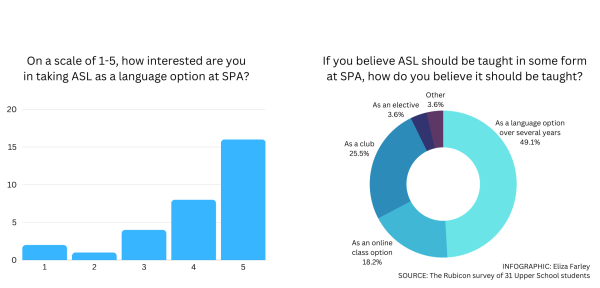If Spanish, French, German, and Chinese are offered as language courses to build cultural awareness, why can’t American Sign Language (ASL) be included as well? In years prior, students have been able to do an independent study with Señora Starkey or other teachers fluent in the language, but with the introduction of the ASL Club and more disability awareness, now is the time to invest in a new language. Offering American Sign Language allows students to further their interactions with the world and form deeper connections with deaf people.
According to the National Institute on Deafness and Other Communication Disorders, ASL has no former creation. However, some suggest the beginnings of ASL were around 200 years ago with the mixing of local American signs and French Sign Language.
Unfortunately, due to the eugenics movement of the 20th century, deaf people were often stripped of their right to learn their language and forced to learn oralism, which is a form of communication through lip reading. As a result many hearing impaired people opted for a cochlear implant, a small electronic device that can provide a sense of sound or partial hearing.
Through the 21st century, the Deaf community has moved away from adapting to their hearing counterparts and become proud of their language. In addition to the Deaf community, many people who are nonverbal use ASL as well.

According to ASL Deafined, over 1,000 public high schools offer ASL as a language course. Teaching this language demonstrates an effort to support this community and puts students at an advantage in communication. Plus, there’s interest for this kind of experience at SPA: 53.6% of poll participants marked 5 on a scale of 1-5 on interest of learning ASL at school.
A conversation between a person who signs and a person who cannot can often be awkward, trying to understand each others’ gestures, sounds and then often giving up and pulling up a phone. Meeting someone with the ability to speak to them automatically shows a sign of respect—you now not only see them, but hear them.
Also those who are interested in learning a new language can use tools like Duolingo to practice, whereas ASL, being a physical language, is harder to learn during one’s free time. This is a benefit of teaching it at school, the structure provides space to practice it consistently and improve retention.
The gift of language is the opportunity for connection. As our society moves toward more inclusivity for people of all abilities, communication is the first step, and the first hello.